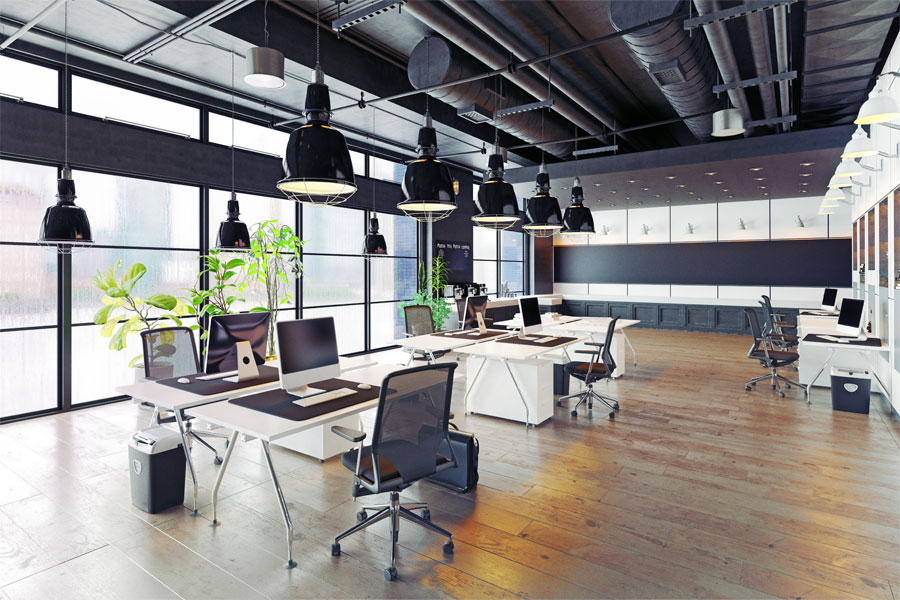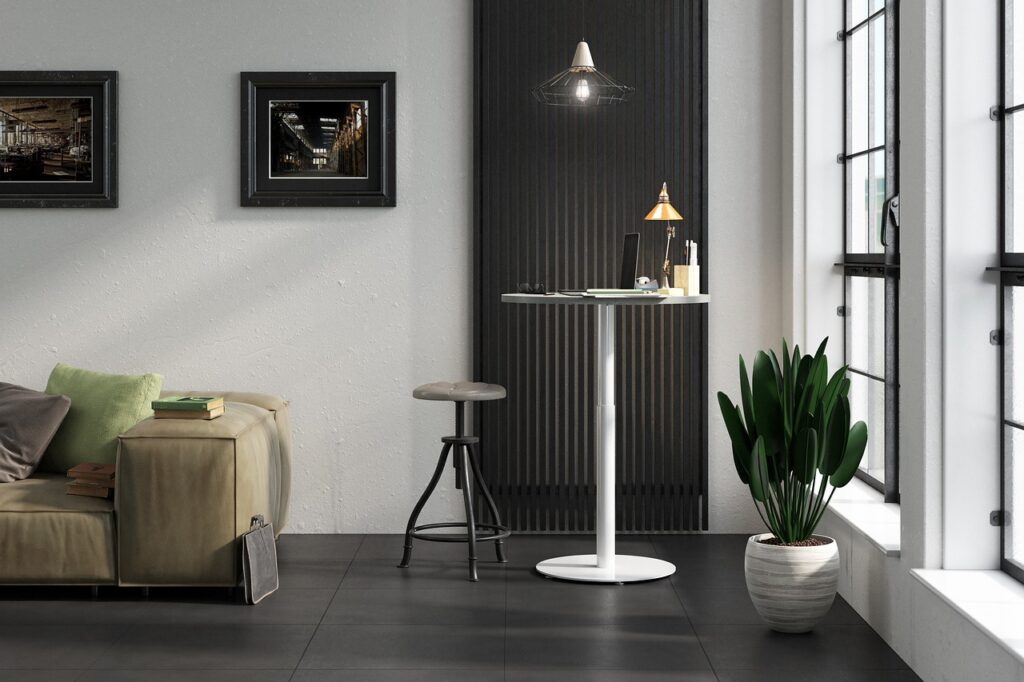In today’s competitive business environment, maximizing employee productivity is crucial for success. While numerous factors influence productivity, office design plays a significant role in creating an environment that fosters efficiency, creativity, and well-being. A well-designed workspace not only boosts employee morale but also enhances performance, leading to better business outcomes. This blog explores the impact of office interior designer on employee efficiency and offers practical tips for creating a productive work environment.
The Relationship Between Office Design and Productivity
Office design affects productivity in several ways, including employee comfort, health, and overall satisfaction. A well-thought-out office layout can minimize distractions, reduce stress, and improve focus. Conversely, a poorly designed office can lead to discomfort, frequent interruptions, and a decline in work quality.

Key Elements of Productive Office Design
Economics
Ergonomics is the science of designing workspaces that fit the physical needs of employees. Ergonomic office furniture, such as adjustable chairs and desks, can prevent musculoskeletal problems and reduce fatigue. Proper ergonomics improve posture, reduce the risk of injury, and enhance overall comfort, allowing employees to work more efficiently for longer periods.
Lighting
Lighting significantly impacts employee mood and productivity. Natural light is the best option, as it reduces eye strain and boosts energy levels. Studies have shown that employees exposed to natural light report higher levels of alertness and better sleep patterns. When natural light is not available, high-quality artificial lighting that mimics daylight can be an effective alternative.
Color Psychology
Colors can influence mood and productivity. For instance, blue is known to promote calmness and concentration, while yellow can boost creativity and optimism. It’s essential to choose a color scheme that aligns with the intended function of different office areas. For example, blue and green hues might be ideal for focus areas, while warmer colors could be used in collaborative spaces to stimulate interaction.
Acoustics
Noise is a common distraction in many offices. Poor acoustics can lead to increased stress and reduced concentration. Implementing sound-absorbing materials, such as carpets, acoustic panels, and ceiling tiles, can significantly reduce noise levels. Additionally, creating designated quiet zones can provide employees with a space to focus without interruptions.
Open vs. Private Spaces
The debate between open-plan and private offices continues, but a balanced approach often works best. Open spaces can foster collaboration and communication, while private areas are essential for tasks that require deep concentration. Providing a variety of workspaces allows employees to choose the environment that best suits their needs throughout the day.
- Biophilic Design
Incorporating elements of nature into office design, known as biophilic design, can positively impact employee well-being and productivity. Plants, natural materials, and views of nature can reduce stress, improve air quality, and enhance cognitive function. Small touches, like desk plants or nature-inspired artwork, can make a significant difference.
- Flexible Workspaces
Flexible workspaces accommodate employees’ diverse needs by offering various seating arrangements and work areas. This includes hot-desking options, breakout areas, and collaborative zones. Flexibility in the workspace allows employees to move around and choose the best setting for their current tasks, promoting efficiency and comfort.
Practical Tips for Designing a Productive Office

Conduct a Needs Assessment
Before redesigning an office, it’s essential to understand the specific needs and preferences of your employees. Conduct surveys or focus groups to gather input on what aspects of the current design work well and what could be improved. This feedback will be invaluable in creating a workspace that truly supports productivity.
Prioritize Comfort
Investing in high-quality ergonomic furniture is crucial. Adjustable chairs, sit-stand desks, and supportive accessories like footrests and monitor stands can significantly enhance comfort. Ensure that workstations are set up to promote good posture and reduce strain.
Optimize Lighting
Maximize natural light by positioning workstations near windows. Use window treatments that allow for light control without blocking it entirely. Supplement natural light with adjustable LED lighting that mimics daylight to maintain a consistent lighting environment.
Implement a Thoughtful Color Scheme
Choose colors that align with the intended use of each space. Use calming colors like blue and green in focus areas and more vibrant colors in collaborative spaces. Avoid overly bright or harsh colors that can cause eye strain or anxiety.
Enhance Acoustics
Implement sound-absorbing materials and design features to minimize noise distractions. Consider installing white noise machines or background music systems to mask unwanted sounds. Designate quiet zones and collaborative areas to cater to different work styles.
Incorporate Nature
Add plants and natural elements throughout the office. Use living walls, potted plants, and natural materials like wood and stone. Ensure that employees have access to outdoor spaces or views of nature whenever possible.
Foster Flexibility
Create a variety of workspaces that cater to different tasks and work styles. Include private rooms for focused work, open areas for collaboration, and casual spaces for informal meetings. Encourage employees to move around and choose the best environment for their needs.
Promote Cleanliness and Organization
A cluttered workspace can lead to distraction and decreased productivity. Provide ample storage solutions to keep the office organized. Encourage employees to maintain a clean and tidy workspace by implementing regular cleaning schedules and providing organizational tools.
Encourage Personalization
Allow employees to personalize their workspaces to some extent. Personal touches, such as family photos or favorite desk accessories, can make employees feel more comfortable and connected to their work environment.
Regularly Evaluate and Adjust
Office design is not a one-time project but an ongoing process. Regularly assess the effectiveness of the design and make adjustments as needed. Solicit feedback from employees to ensure the workspace continues to meet their needs and supports productivity.
Conclusion

The design of an office can significantly impact employee productivity and overall business success. By focusing on key elements such as ergonomics, lighting, color psychology, acoustics, and flexibility, businesses can create environments that enhance efficiency, creativity, and well-being. Investing in thoughtful office design is not just about aesthetics; it’s a strategic move that can lead to happier, healthier, and more productive employees. As the workplace continues to evolve, prioritizing effective office design will remain essential for staying competitive and fostering a positive work culture.





